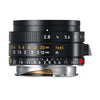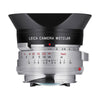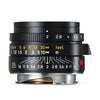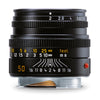The Leica M11-P stands out as the pioneer, being the world's first camera to incorporate Content Authenticity Initiative (CAI) technology. The CAI, a collaborative endeavor initiated by Adobe in conjunction with organizations such as The New York Times and Leica, strives to establish a standard for digital content attribution.
In the M11-P, this innovative technology manifests as Leica Content Credentials. Leveraging a secure processing chip, the camera encrypts image metadata at the moment of capture. This encrypted information can be independently verified and extended when using compatible applications like Adobe Photoshop. Viewers gain the ability to authenticate the origin of the image, instilling confidence in its legitimacy. For creators, this offers an additional means of maintaining proper credits.
The M11-P inherits the high-resolution design of the M11, featuring a 60MP full-frame CMOS sensor with a back-illuminated (BSI) design. This BSI design enhances noise performance and readout speeds, particularly beneficial in low-light conditions with higher ISOs. The heightened resolution caters to detail-centric applications, such as landscape and architectural photography.
The physical design of the sensor includes an updated ultra-thin dual-layer filter glass, absorbing UV and IR wavelengths. This feature contributes to greater clarity and more accurate rendering when using M lenses.
Maestro III Image Processor
Facilitated by the Maestro III processor, the M11-P boasts faster processing and Triple Resolution Technology. This processor also extends the sensitivity range to ISO 64-50000, providing enhanced detail, quality, and natural color rendering at lower ISO settings. The Maestro III enables continuous shooting at up to 4.5 fps and ensures swift file saving, contributing to an intuitive and efficient shooting experience.












